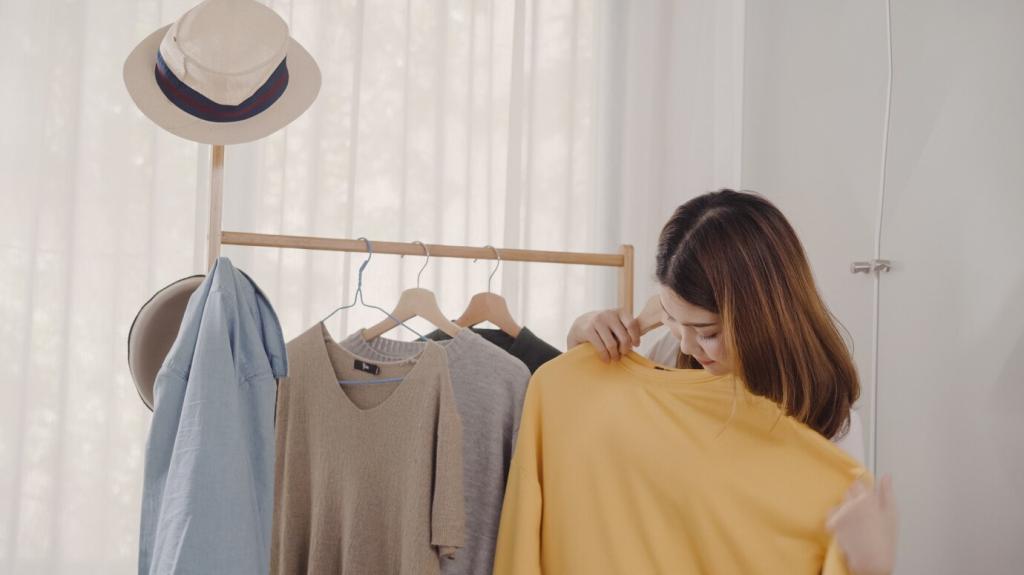
Sustainable Fashion Trends for Every Season
Discover the ever-evolving world of sustainable fashion, where conscious choices meet creativity and style for every season. This comprehensive guide explores the key trends shaping ethical wardrobes year-round, from innovative materials to mindful production. Embrace eco-friendly clothing without sacrificing your unique sense of style as you learn how to build a more sustainable closet, adapt to seasonal changes, and create lasting impact with your fashion choices. Every section dives into the practical and inspiring ways sustainability is influencing what we wear, ensuring your wardrobe stays fresh, relevant, and better for the planet.

Eco-Friendly Fabrics Revolution
Organic cotton is experiencing a resurgence as people become more aware of how conventional cotton farming impacts soil and water resources. Unlike traditional cotton, organic varieties are grown without harmful pesticides or synthetic fertilizers, preserving natural ecosystems and promoting healthier working conditions for farmers. Clothes made from organic cotton are not only softer and hypoallergenic but also durable enough to withstand season after season. By embracing organic cotton in your wardrobe, you’re supporting a more responsible supply chain and encouraging brands to continue investing in ethical agriculture.
Circular Fashion and Upcycling
Upcycling transforms discarded fabric or vintage garments into fresh, relevant styles, offering fashion lovers a chance to express individuality while minimizing environmental footprint. Designers are experimenting with artful patchwork, creative reimagining of old denim, and the integration of unexpected materials into new collections. These inventive pieces not only look unique but also tell a story of sustainability and resourcefulness. As upcycling becomes increasingly mainstream, it’s easier than ever to find statement items that celebrate both creativity and eco-consciousness.
Minimalist Wardrobe Choices
01
A capsule wardrobe is a thoughtfully selected collection of essential clothing items designed for maximum remixability and minimal clutter. Each piece is chosen for its style versatility and ability to move seamlessly between seasons—lightweight knits, well-cut trousers, or classic outerwear, for example. By committing to a capsule approach, you eliminate unnecessary shopping, invest in quality, and make it easier to stay fashionable and sustainable year-round. This method highlights the beauty of fewer but more meaningful choices.
02
Time-tested classics—think white shirts, denim jeans, trench coats—are foundational to sustainable fashion. Choosing staple pieces made from robust, eco-friendly fabrics ensures your wardrobe never goes out of style, no matter the season. These garments can be reinvented with accessories, layered for warmth, or styled down for casual days, supporting longevity in both fashion and function. Investing in such pieces not only minimizes environmental impact but also creates a wardrobe built to endure.
03
Adopting a quality-over-quantity mindset is the backbone of minimalist sustainable fashion. Rather than purchasing fleeting trends or cheap garments that quickly wear out, conscious consumers seek out well-crafted, ethically made clothes designed to withstand many washes and seasons. This philosophy fosters personal satisfaction and a stronger relationship with your wardrobe, helping you resist impulsive consumption and its environmental consequences. Over time, your closet will reflect both your style and your commitment to lasting change.
Previous
Next
Plant-based dyes are making a comeback, offering vibrant, unique hues derived from roots, leaves, and flowers instead of synthetic chemicals. These dyes are gentle on the environment as they require fewer toxic substances and less water, ensuring safe disposal and biodegradable results. Clothing colored naturally is often softer and hypoallergenic, making it suitable for sensitive skin. Embracing plant-dyed garments supports a cleaner approach to both personal style and the broader fashion industry.
Conscious Color Palettes and Prints
Slow Fashion and Local Artisanship
Handcrafted Garments Tell a Story
Clothing made by skilled artisans carries unique characteristics that distinguish it from mass-produced fashion. Hand-stitched detailing, traditional weaving, and embroidery techniques connect wearers to centuries-old practices, each piece telling its own story. These garments often use local, natural fibers and environmentally responsible processes, offering heirloom-quality fashion for every season. Choosing handcrafted items supports livelihoods and helps preserve cultures, making every outfit a celebration of heritage and sustainability.
Supporting Ethical Small Brands
Purchasing from small, ethical brands contributes directly to the growth of a more sustainable industry. These companies are often transparent about sourcing, production methods, and labor practices, setting higher standards for themselves and larger competitors. Their collections tend to be thoughtfully designed, reflecting seasonal trends through a responsible lens. By consciously seeking out and supporting these businesses, you help shape a future where fashion is sustainable, equitable, and inspiring.
The Value of Made-to-Order and Bespoke
Made-to-order and bespoke clothing eliminates overproduction and ensures a perfect fit tailored to individual preferences and seasonal needs. This approach reduces waste and lowers the carbon footprint by making only what’s needed, often with higher quality and care than off-the-rack pieces. Investing in customized garments fosters a sense of connection and pride, highlighting the beauty of intentional consumption. It’s a personalized path to sustainable fashion that highlights craftsmanship and thoughtful design.
Technological Innovations in Sustainable Fashion
Emerging smart fabrics blend environmental responsibility with high-tech performance. Examples include moisture-wicking, temperature-regulating, and self-cleaning textiles made from recycled or bio-based fibers. These materials adapt to changing weather, making them ideal for year-round wear without the need for multiple seasonal layers. The shift toward smart fabrics demonstrates how innovation can support a circular economy and address the practical challenges of sustainable living.

